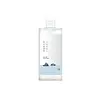What's inside
What's inside
 Key Ingredients
Key Ingredients

No key ingredients
 Benefits
Benefits

 Concerns
Concerns

No concerns
 Ingredients Side-by-side
Ingredients Side-by-side

Water
Skin ConditioningDipropylene Glycol
HumectantGlycerin
HumectantPolyglyceryl-4 Caprate
Emulsifying1,2-Hexanediol
Skin ConditioningSea Water
HumectantHyaluronic Acid
HumectantHydrolyzed Hyaluronic Acid
HumectantSodium Hyaluronate
HumectantPanthenol
Skin ConditioningAllantoin
Skin ConditioningCeramide NP
Skin ConditioningPentylene Glycol
Skin ConditioningC12-14 Pareth-12
EmulsifyingCaprylyl Glycol
EmollientEthylhexylglycerin
Skin ConditioningButylene Glycol
HumectantTocopherol
AntioxidantDisodium EDTA
Water, Dipropylene Glycol, Glycerin, Polyglyceryl-4 Caprate, 1,2-Hexanediol, Sea Water, Hyaluronic Acid, Hydrolyzed Hyaluronic Acid, Sodium Hyaluronate, Panthenol, Allantoin, Ceramide NP, Pentylene Glycol, C12-14 Pareth-12, Caprylyl Glycol, Ethylhexylglycerin, Butylene Glycol, Tocopherol, Disodium EDTA
Isopropyl Myristate
EmollientCaprylic/Capric Triglyceride
MaskingSorbeth-30 Tetraoleate
EmulsifyingPolyglyceryl-10 Diisostearate
EmulsifyingGlycerin
HumectantWater
Skin ConditioningOryza Sativa Bran Oil
EmollientSimmondsia Chinensis Seed Oil
EmollientButylene Glycol
Humectant1,2-Hexanediol
Skin ConditioningOryza Sativa Extract
AbsorbentPhenoxyethanol
PreservativeSaponaria Officinalis Leaf Extract
AntimicrobialParfum
MaskingHydroxycitronellal
PerfumingLinalool
PerfumingLimonene
PerfumingIsopropyl Myristate, Caprylic/Capric Triglyceride, Sorbeth-30 Tetraoleate, Polyglyceryl-10 Diisostearate, Glycerin, Water, Oryza Sativa Bran Oil, Simmondsia Chinensis Seed Oil, Butylene Glycol, 1,2-Hexanediol, Oryza Sativa Extract, Phenoxyethanol, Saponaria Officinalis Leaf Extract, Parfum, Hydroxycitronellal, Linalool, Limonene
 Reviews
Reviews

Ingredients Explained
These ingredients are found in both products.
Ingredients higher up in an ingredient list are typically present in a larger amount.
1,2-Hexanediol is a synthetic liquid and another multi-functional powerhouse.
It is a:
- Humectant, drawing moisture into the skin
- Emollient, helping to soften skin
- Solvent, dispersing and stabilizing formulas
- Preservative booster, enhancing the antimicrobial activity of other preservatives
Butylene Glycol (or BG) is used within cosmetic products for a few different reasons:
Overall, Butylene Glycol is a safe and well-rounded ingredient that works well with other ingredients.
Though this ingredient works well with most skin types, some people with sensitive skin may experience a reaction such as allergic rashes, closed comedones, or itchiness.
Learn more about Butylene GlycolGlycerin is already naturally found in your skin. It helps moisturize and protect your skin.
A study from 2016 found glycerin to be more effective as a humectant than AHAs and hyaluronic acid.
As a humectant, it helps the skin stay hydrated by pulling moisture to your skin. The low molecular weight of glycerin allows it to pull moisture into the deeper layers of your skin.
Hydrated skin improves your skin barrier; Your skin barrier helps protect against irritants and bacteria.
Glycerin has also been found to have antimicrobial and antiviral properties. Due to these properties, glycerin is often used in wound and burn treatments.
In cosmetics, glycerin is usually derived from plants such as soybean or palm. However, it can also be sourced from animals, such as tallow or animal fat.
This ingredient is organic, colorless, odorless, and non-toxic.
Glycerin is the name for this ingredient in American English. British English uses Glycerol/Glycerine.
Learn more about GlycerinWater. It's the most common cosmetic ingredient of all. You'll usually see it at the top of ingredient lists, meaning that it makes up the largest part of the product.
So why is it so popular? Water most often acts as a solvent - this means that it helps dissolve other ingredients into the formulation.
You'll also recognize water as that liquid we all need to stay alive. If you see this, drink a glass of water. Stay hydrated!
Learn more about Water